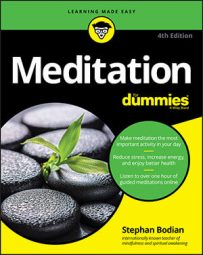- Choose a core technique. If you do nothing else, you’ve still created a viable meditation practice that will serve you quite well. Mindfulness meditation is a good choice because it teaches skills you can translate to every activity and moment of your life, but some people prefer mantra meditation or concentration on a visual object.
- Round out your practice. “Play to your strengths and fill in the gaps,” you may want to add another practice or two that cultivates different qualities of mind, body, or heart. But if you have only a snippet of time each day, stick with your core technique instead of getting too complex.
- Decide how much and how often. Depending on your motivation and your reasons for meditating, you’re going to sit longer or shorter periods more or less frequently. Your interest in meditation may also wax and wane somewhat with the cycles of your life. For example, you may have times when you focus more on outward achievement or family life and times when you pay more attention to inner unfolding.
- Keep it regular. Whatever else you do (and whatever the cycles of your life), stand by your core technique as you would your loved one or your kids. Stand by it through thick and thin, ups and downs, feast and famine, and any other clichés you can muster.
- Add practices as needed, but stick with them. For example, if you get sick, by all means add a healing meditation. If you want to open your heart some more, add a lovingkindness meditation. But don’t sacrifice your core technique, and stick with your new one as well.
- Know when to go deeper. If you find yourself hungering for more time on your meditation cushion, by all means pencil it in. The more you meditate, the deeper you’ll go. Just remember that it’s better to wait until you want to do more rather than pushing yourself because you think you “should.”
- Seek help when you need it. You can venture only so far into unknown terrain alone. If you start encountering problems in your meditation or experiences that confuse or scare you (or you just want to make sure you’re doing it right), you may want to look for a teacher. (For a teacher, visit StephanBodian.org.)

